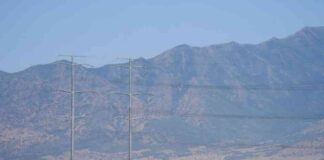Alaska to Resume Aerial Shooting of Wolves and Bears: Environmental Concerns
Alaska is set to resume the controversial practice of aerial shooting of bears and wolves in an attempt to control their populations and boost moose and caribou herds across the state. The program allows hunters to kill up to 80 percent of natural predators in specific areas, a move that has sparked outrage among environmental groups and conservationists.
Renewed Aerial Shooting Program
The renewed program will see helicopters targeting wolves and bears in an effort to reduce their numbers significantly. Critics have labeled the practice as “barbaric” and “inhumane,” arguing that it disrupts the delicate balance of predator and prey in the wild. Ecologists and environmental organizations have raised concerns about the lack of scientific evidence supporting the notion that reducing predator populations will lead to an increase in moose and caribou numbers.
Controversy and Opposition
Environmental groups have strongly opposed the aerial shooting program, stating that it is driven more by the interests of hunters looking for trophy animals than by sound wildlife management practices. The state’s report on the program revealed that over 100 bears were killed by helicopters in recent years, including cubs, raising serious ethical and ecological concerns.
Impact on Wildlife and Conservation Efforts
Critics argue that the mass killing of predators near national parks has led to a significant decline in predator populations, affecting the overall ecosystem and wildlife diversity in the region. The refusal of Alaska officials to allow independent observers or scientific review of the program has further fueled the controversy surrounding the practice. Conservationists fear that the indiscriminate killing of predators could have long-term consequences on the delicate balance of the ecosystem.
Alaska’s decision to resume aerial shooting of bears and wolves has sparked a heated debate between conservationists, hunters, and wildlife enthusiasts. As the state moves forward with its controversial program, the impact on the local wildlife and ecosystem remains a pressing concern for environmental advocates and scientists alike. The delicate balance between predator and prey hangs in the balance, highlighting the complex challenges of wildlife management and conservation efforts in the modern world.














